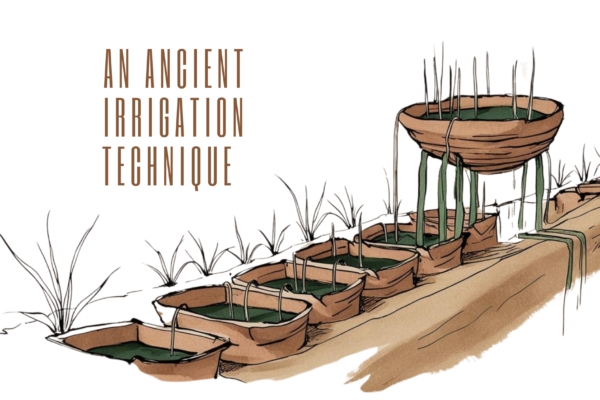
In India, people skillfully cultivate everything they need on small, lush plots of land, crafting vibrant spaces that serve as both a “nature’s medicine cupboard” and a bountiful source of nourishment. These gardens are thoughtfully designed, showcasing a variety of essential plants, including the sweet and juicy Chinese date, the fragrant mango, the medicinal Neem tree, and an array of colourful flowers that attract butterflies and pollinators.
Delicate candles are artfully placed throughout the garden, their soft glow illuminating the surroundings and transforming the area into a peaceful, sacred space known as “Being” or “Essence,” where one can connect with nature and find tranquillity.
The “Being” is not merely a collection of plants; it is a thoroughly balanced ecosystem where each element is positioned to nurture and improve the well-being of its neighbours. This harmonious interplay among the components creates a vibrant tapestry of life, reflecting the essence of Atman—the spiritual principle of self-awareness and interconnectedness. In this environment, every leaf, root, and bloom contributes to a collective vitality, emphasizing the profound relationship within the natural world.
The harmonious integration of nature and spiritual practice is beautifully evident in India’s religious art and architecture. Temples and monasteries are often adorned with exquisite and intricate depictions of vibrant flora, majestic fauna, and celestial motifs, all illuminating the profound connection between nature and the divine. This intricate artistry emphasizes that the natural world is not simply a location but an essential and inseparable component of faith and spiritual manifestation.
Another fascinating concept is Tapovana, a term derived from two Sanskrit roots: “tapas,” meaning penance, asceticism, or spiritual practice, and “vana,” meaning forest. Together, they form a “forest of asceticism” or “forest of spiritual practice.”
Tapovana is envisioned as a serene and almost metaphysical oasis—a lush, divine sanctuary carved out of the untamed wilderness. It is a secret shelter where spiritual seekers can immerse themselves in meditation and self-discipline, surrounded by abundant greenery and gentle, harmonious wildlife. More than just a physical space, Tapovana evokes a vision of tranquillity that blends the raw power of nature with celestial stillness.
Hinduism embodies a profound moral reverence for nature, evident across various philosophical interpretations of plant life. Hindu culture acknowledges the interconnectedness of all living beings, including plants, through Brahman—the ultimate and all-encompassing principle of the universe. Since plants are considered part of the cycle of births and deaths (samsara), they are believed to possess consciousness and, in some sense, feelings.
Many trees are believed to be sacred and are associated with deities who protect them. Believers honour these trees by offering water or flower garlands. One of the most revered trees is the Neem tree, often referred to as the “village pharmacy,” the “divine tree,” and a “panacea for all diseases.” It is believed to be the dwelling place of Goddess Shitala, who grants relief to those suffering from fever. The god of medicine, Dhanvantari, is also connected to the Neem tree, which is said to have divine origins. According to legend, a few drops of the elixir of immortality fell onto the tree when the demigod Garuda was transporting it to heaven. Additionally, Neem is thought to protect newborns from evil spirits.
Beyond its spiritual significance, Neem is one of the most promising trees for tackling global challenges. Scientists believe it could revolutionize pest control, medicine, and even birth control. Additionally, Neem has the potential to combat soil erosion, deforestation, and climate change by helping to cool an increasingly overheated planet. Few plants offer such a wide range of practical and ecological benefits.
Neem is a drought-resistant evergreen tree from the Meliaceae family valued for its diverse medicinal and practical uses. For centuries, people in India, Africa, and Central Asia have used Neem twigs as natural “toothbrushes,” chewing them to clean their teeth and promote oral health. Every part of the Neem tree has a purpose due to its numerous beneficial properties, which include antibacterial, insecticidal, sedative, and contraceptive effects. Neem has been employed to treat various conditions such as acne, infected wounds, eczema, and psoriasis, and it may even help prevent certain cancers. Its leaves can be processed into powders for use in creams, as soil fertilizers, or as mulch. They also function as antipyretics, anthelmintics, and remedies for stomach issues, gum disease, and diabetes.
Furthermore, Neem fruit can be pressed for oil, a potent natural repellent used in lotions, machine oils, and other applications. Trees shape our lives in both visible and invisible ways. They are silent witnesses to our journeys, leaving lasting impressions on our memories. Throughout history, people have revered trees, imbuing them with deep symbolism and admiring their form, endurance, and grace. Trees unite two worlds, with their roots anchored deep in the earth and crowns reaching skyward.
If we take a moment to reflect, we can recall the trees that have marked significant moments in our lives. I certainly remember mine. There were the birches from my early childhood, and I remember my father bringing home jars of birch sap. In the small town where I grew up, the bright red and yellow maples stood out, and I have fond memories of collecting vibrant bouquets of leaves for my mother in the autumn. I enjoyed skiing through a snowy forest during school days, often lagging behind my friends to “listen to the silence.” The fir trees would shake their snowy hand-like branches onto our heads, always making us laugh.
The cypress trees of my sea-coast girlhood and their scent rising in the summer heat. My father would pick cypress cones and toss them to me and my sister. I remember a mischievous classmate who once hung my backpack on a cypress branch and ran away. The fig tree by our kitchen window gave me a favourite spot where I could sit on its upper branches for hours. The apple tree in my grandmother’s garden bore fruit that wasn’t too sweet—just how I liked it. Then, endless rows of orange trees greeted me at the Spanish airport. Later, in northern Spain, I encountered vast eucalyptus forests stretched before my eyes. Now, my children spend hours playing with fallen chestnuts beneath towering trees. The winding Irish roads and patchwork-green fields are forever etched in my memory, accompanied by the small hawthorn trees that stood watch along the way.





No Comments